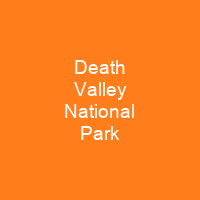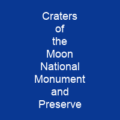Death Valley National Park: A Desert of Wonders and Challenges
Imagine a vast, sun-baked expanse where the earth seems to stretch endlessly under an unyielding sky. This is Death Valley National Park, a place that challenges our perceptions of nature’s extremes.
The Heart of the Desert
Death Valley straddles the California-Nevada border, occupying a unique interface between the Great Basin and Mojave deserts. It’s the largest national park in the contiguous United States, hottest, driest, and lowest of all parks. The park contains Badwater Basin, the second-lowest point in the Western Hemisphere, and over 93% of its area is designated wilderness.
Life in the Harshest Conditions
The park is home to diverse plant and animal species adapted to the harsh desert environment. Native American groups inhabited the area from as early as 7000 BC, and European-Americans named the valley after a group that died there in 1849. Boom towns sprang up during the late 19th and early 20th centuries to mine gold and silver, but only borax proved profitable.
A Natural Wonder
The park was declared a national monument in 1933 and became a national park in 1994. Its natural environment has been shaped by geology, with ancient seas and volcanoes creating the current landscape. Death Valley is the fifth-largest American national park, larger than Rhode Island and Delaware combined, and was designated as a dark sky park in 2013.
Geological Marvels
The park’s extreme topographic relief creates a vast elevation gradient between Mount Whitney (the tallest mountain in the contiguous United States) and Badwater Basin (the lowest point at 282 feet below sea level). This environment leads to an abundance of salt pans, with the largest extending 40 miles across the valley floor, rich in minerals such as borax.
Climate and Ecosystem
Death Valley has a hot desert climate with extreme temperature fluctuations. The highest ambient air temperature ever recorded was 134 °F (57 °C), while temperatures below freezing occur on average 8.6 days annually. The Death Valley springs derive their water from a regional aquifer that extends to southern Nevada and Utah.
Geological History
The Panamint Range is the highest point at 11,049 feet, with the region being a rainshadow effect due to its mountain ranges. Death Valley is North America’s driest spot, receiving about 1.5 inches of rainfall annually. Annual precipitation varies from 1.92 inches to over 15 inches in higher mountains.
Human History and Development
The first documented tourist facilities in Death Valley were built in the 1920s. People flocked to resorts around natural springs thought to have curative properties. In 1927, Pacific Coast Borax turned its ranch into a resort and harnessed the water at Furnace Creek. The valley became a popular winter destination.
Conservation Efforts
In 1952, President Harry Truman added Devils Hole to Death Valley National Monument; it is the only habitat of the Devils Hole pupfish. In 1976, Congress passed the Mining in the Parks Act, which closed Death Valley National Monument to new mining claims and banned open-pit mining.
Modern Day
The park has a diverse geologic history, with extensive volcanism, sedimentation, and tectonic deformation. The area experienced four major periods of volcanism, three or four periods of major sedimentation, and several intervals of major tectonic deformation. Two periods of glaciation have also affected the area.
Activities and Attractions
The park offers various activities including sightseeing by personal automobile, four-wheel drive, bicycle, or hiking. Over 350 miles of unpaved roads provide access to wilderness hiking, camping, and historical sites. Nine designated campgrounds are within the park, with overnight permits available at the Visitor Center.
Conclusion
Death Valley National Park is a testament to nature’s resilience and human ingenuity. From its geological wonders to its diverse ecosystems, this vast desert landscape continues to captivate visitors and researchers alike. As we explore its depths, we are reminded of both the beauty and challenges that define our natural world.

You want to know more about Death Valley National Park?
This page is based on the article Death Valley National Park published in Wikipedia (retrieved on December 4, 2024) and was automatically summarized using artificial intelligence.







